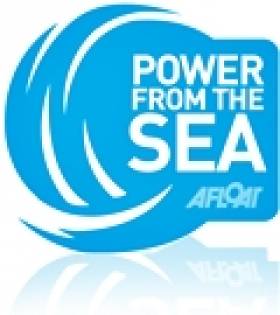Displaying items by tag: Siemens
Winds of Change face former Fastnet Ferry and Sistership
#FERRY NEWS - With the acquisition of Fastnet Line's Julia to C-BED as previously reported, the Dutch owned company's fleet rises to three floating hotels which are used to accommodate workers in offshore wind-farm energy installations, writes Jehan Ashmore.
All three vessels are former ferries and one of which the Wind Ambition was in recent years based in in the north Irish Sea. The third vessel is Wind Solution, for photos and technicl details of these vessels click HERE. While the former Cork-Swansea ferry has been renamed Wind Perfection (1981/22,161grt) , she remains berthed in Cork city docks having laid-up there since the route's closure last November.
The vessel is however due to undergo an extensive refit in The Netherlands before she takes up a charter in the North Sea with Siemens in October, as a floating hotel for wind-turbine industry employees.
By using the vessel Siemens are to save valuable time and money which would otherwise by the daily transfer of construction workers to and from the mainland. For a video computer simulation showing the different logistics involved between an offshore floating hotel and a conventional hotel onshore, click HERE.
Wind Perfection was originally built as Olau Britannia and shared sailings with sistership Olau Hollandia for a UK-Dutch route between Sheerness-Vlissingen operated by Olau Line.
The sisters were replaced by newer vessels on the North Sea route in the late 1980's and sold to various owners during the years. Before Julia made her Celtic Sea debut, she last ran under the same name for Stella Line on the St. Petersberg-Helsinki route.
Incidentally her sister Norlandia (1981/21,473grt) operates also from the Finnish capital to Tallinn for Eckero Line. Likewise she too is due to undergo changes as she is to be replaced later this year as a second-hand ferry from Mediterranean owners was sold to the Baltic Sea operator.
- Ferry news
- Fastnet Line
- CBed
- Celtic Sea ferry operator Fastnet Line
- Olau Line
- Julia
- Olau Britannia
- Olau Hollandia
- CorkSwansea
- Stella Lines
- Siemens
- Ports and Shipping News
- Irish Sea ferry news
- Eckero Line
- Nordlandia
- HelsinkiTallinn
- Wind Perfection
- Wind Ambition
- Wind Solution
- Offshore Floating Hotels
- WindFarm Instalations
- North Sea windfarms
Harland and Wolff to build two Offshore Substations for Siemens
Siemens, a global powerhouse in electronics and electrical engineering, has awarded Harland and Wolff Heavy Industries Limited the design and build contract for two offshore substation platforms for the Gwynt y Môr offshore wind farm off the coast of North Wales. The substations will be completed by June 2012.
"We are already a recognised renewables logistics base and prototype builder and are delighted to have been awarded this contract. It clearly demonstrates our continuing development as part of the UK supply chain for marine renewable energy. Our project goals are to make the design and build process frictionless for Siemens and to ultimately provide the operator, RWE Innogy, with a robust and durable offshore platform, built safely,
on time and to budget.'
"A considerable number of these platforms are required to meet the Government's 2020 targets, giving substantial opportunities in the near future," says Mr Cooper.
The Gwynt y Môr offshore wind farm is a 576MW, 160 turbine UK Round 2 wind farm being developed by a consortium of RWE Innogy, SWM – Municipal Utility Munich, Germany and Siemens 13km off the coast of North Wales. Siemens will supply the wind turbines which will be connected via 33kV array cables to two new offshore substations.
Onboard the H&W built platforms Siemens' equipment will transform the power from 33kV up to 132kV for transmission back to a new onshore substation at St Asaph also to be built by Siemens.
John Willcock, director of Major Projects for Siemens Transmission and Distribution Ltd. Says: "Siemens is delighted to make this award to Harland and Wolff. This is a key project for Siemens, as one of the largest of its type ever developed. The H&W team impressed us by their approach to the project and understanding of our requirement.
This is a new relationship for both companies and one that could be fruitful in the future. It is great also to be able to support a UK-based firm."
Trevor McCormick, H&W Project Manager will have responsibility for the project in Belfast. He says: "This is a substantial project that will be the focus of our attention over the next two years. The project was secured due to a number of factors including the commitment demonstrated by all areas of the company during the tendering phase; we fully intend carrying this enthusiasm and dedication through to completion."
H&W, having decades of experience in offshore and marine projects for the oil, gas and shipbuilding industries, has designed the platform using stiffened panels typical of shipbuilding and offshore structures. This approach offers cost and weight savings, increased watertight integrity, structural flexibility and opens opportunities for floating, self-installing projects in the future.





























































